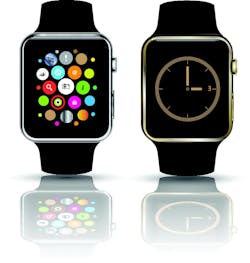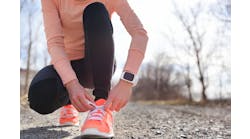Aetna’s Consumer Tech Bet: Why the Insurer is Teaming Up with Apple to Keep Patients Healthier
Back in January, consumer tech giant Apple and health insurer Aetna, now a CVS Health company, announced the launch of an app, called Attain, that will provide the payer’s members personalized goals, track their daily activity levels, recommend healthy actions, and ultimately reward them for taking these actions to improve their well-being. Reward opportunities include the ability for eligible users to earn their Apple Watch through their participation in the program.
As of this week, the app is now live as executives from both companies look to build on a three-year partnership that began as a subsidy program for the Apple Watch in 2016 in which 50,000 Aetna members received the wearable device at no cost, while subsidizing the cost for large employers and individual customers through a new healthy living initiative. As a result of that collaboration, Apple and Aetna officials said in January that they found about 90 percent of those who participated in the program reported a health-related from using the watch that they otherwise would not have achieved.
“Now, we didn’t have access to the [wearable] data for [the initial program] and we didn’t mine it or corroborate it with claims data, but the results said to us that there is more to do here,” says Ben Wanamaker, head of consumer technology and services at Aetna. “If people are just using the device [normally] and realizing health benefits and goals, there’s a lot more we can do if we put a more formal program around it,” Wanamaker said to Healthcare Innovation in an exclusive interview at the World Health Care Congress last week. Broadly, adds Wanamaker, Apple and Aetna have a joint vision of a world where there is more continuous real-time data about health that will allow both companies to do a better job of helping individuals succeed in managing and improving their health.
Aetna—which has opened up spots for about 250,000 to 300,000 of its 22 million members to download Attain in the initial rollout period—is not the first health plan to offer a digital health platform designed to lower costs by motivating consumers to stay healthy. But there are qualities that make Attain unique, officials say. For one, they attest that the Attain app is the first of its kind in that it specifically offers users a personalized experience that combines their health history with the power of the Apple Watch wearable. There have also been plenty of employer-sponsored wellness programs designed to accomplish similar goals, though the results of those have been mixed, with recent research questioning if these initiatives could actually lower healthcare costs.
Wanamaker acknowledges that others have struggled in this area, but believes that the personalization element of the Apple-Aetna partnership could set it apart. With Attain, “a user transparently consents to allow their device, sensor data and claims data to be used to create a more personalized set of goals and actions, and to help us try and find those high-value, low-friction moments where someone can improve their health. Some people have tried [similar] things, but they never had that union of capabilities that we have a chance to use here,” he says.
With that union of data, however, comes an obligation to have a privacy approach that is “member-first,” Wanamaker says. “If you don’t do that, consumers won’t trust you, and you won’t have the benefit you are seeking.” The Attain program is opt-in, he adds, so no one is obligated to participate. “It’s transparent in the consent that goes way above our obligations for HIPAA and any other regulatory requirement. We have put in strict guidelines and firewalls in place so this data can only be used for the benefit of the members. It will never be used for underwriting coverage or pricing decisions,” Wanamaker attests.
Explaining the process further, Wanamaker notes that when users consent to participate, a subset of their summarized claims data is included, rather than their entire claims data set. They also opt-in to share their HealthKit data from their Apple device. That data is then used by Aetna’s clinical team to develop an activity goal that’s personalized to the individual—unlike a “10,000 steps for all goal,” he says. Rather, an active daily calorie goal is based on that person’s age, weight and prior activity history. “So, as you are succeeding in meeting your goals consistently, [the personalized goals] will steadily get more difficult to help you raise your performance. And if you are struggling, they will be dialed back,” Wanamaker says.
The personalization of what Aetna calls “key health moments” in Attain is also an important element, Wanamaker contends. “As your claims data, activity and sensor data run through machine learning models that we have built and continue to develop, occasionally there will be moments where there’s a high-value action for you to take that could make a difference in your health. If it’s relevant—we won’t blast it to everyone—we will serve that to you over time in a way that is personalized in the time you receive them, in the language and tone in which it is given to you, and in terms of the incentive that’s offered to you for completing that action. We think that can have real benefit to our members and reduce friction over the long term,” he says.
Certainly, insurance companies are better off if people are generally healthy. At the same time, though, Aetna and Apple executives do not believe that they can make anyone decide to get healthy. “You cannot force anyone there. But we do think there is a lot we can do, when people do have that initial motivation, to create incentives and remove barriers and friction to them succeeding.”
The Aetna-Apple effort is part of a broader one to find new ways to care for patients and keep them healthier at a lower cost. Part of that picture was painted with CVS Health’s acquisition of Aetna. Wanamaker notes that the average American spends well under 1 percent of his or her waking hours in front of a medical provider, despite the U.S. population spending nearly 20 percent of its money with those providers. “But those providers only account for about 10 percent of those longitudinal health outcomes; a much smaller number than the 40-to-60 percent that’s accounted for by your individual behaviors. That equation just doesn’t balance and it has to tilt over time,” he says.
From an industry perspective, Wanamaker doesn’t feel that anyone makes enough money yet by keeping people healthy. He adds, “As providers have an opportunity to make as much or more money to keep people healthy as when they are sick, that will help us mature. But we are only in the first or second inning of being able to do that well.”



